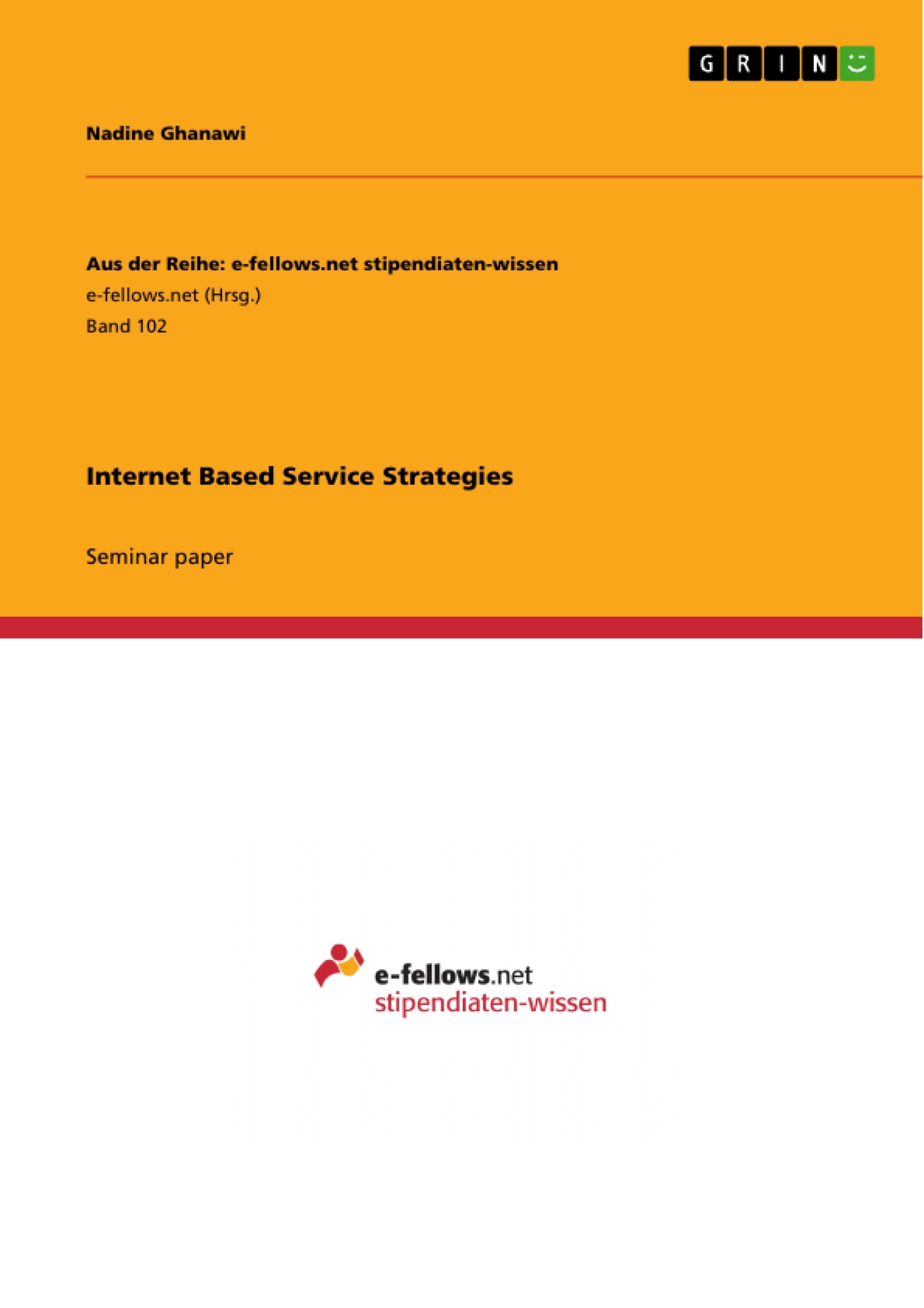The Importance of the Internet -
One of the most important trends over the last years was undisputedly the swift development from an
industrial to the so called information society1, with the World Wide Web leading the way.
According to a study of the EITO2 in 2008, 1.23 billion people worldwide used the internet in this year,
2010 it will likely be about 1.5 billion people (fig.1), not including the numerous cell phone users going
online by mobile telephony connection.3 Approximately 60% of the German population work with the
internet habitually, tending upwards 2% to 3% yearly. Furthermore, computers and laptops with an
internet termination are available in 75% of German households, The social reorganisation launches changes that not only individuals but above all companies should
take into consideration, being responsive to it. This requires an adoption of every corporate division to
the increasing virtualization.
Strategic Changes
The economic system is strongly shaped by prearranged framework conditions, especially by the
markets. Companies have to adapt in the extent external factors e.g. the internet are modifying
markets, to remain competitive.
Characteristics of the internet changing markets are:
• Velocity of information transfer;
• Synchronicity or interactivity;
• Small operating costs.
To be or remain successful in such an internet economy it is not sufficient to react to superficial
changes, but trends have to be identified early and incorporated actively in the company’s strategy as
well as in the resulting division strategy.
litical, and cultural activity.
Table of Contents
- Introduction
- The Importance of the Internet
- Strategic Changes
- What Kind of Internet Based Services Exist?
- Classification by Interaction Degree
- Information Strategy
- Communication Strategy
- Transaction Strategy
- Concrete Configuration of the Service Systems
- Information Systems
- Homepage and Self-Presentation
- Frequently Asked Questions
- Databases
- Communication Systems
- Homepage Features
- Newsletter
- Social Media
- Transaction Systems
- Case Studies
- Information Strategy Example
- Communication Strategy Example
- Transaction Strategy Example
- Different Realization of Strategies
- Another Definition of "Internet Based Service Strategies"
- Integration of an Internet Based Recruiting Service
- Intranet and Similar Employee Platforms
- Deficits of Today's Internet Based Service Strategies
- Main Causes
- Lack of Integration Ability
- Lack of Trust in the Security of Electronic Services
- Conclusion
Objectives and Key Themes
The seminar paper aims to explore the evolution of internet-based service strategies in the context of the information society. It delves into the changing landscape of markets and the need for businesses to adapt to the internet's influence. The paper examines how companies can utilize internet services to enhance their competitive advantage.
- The impact of the internet on the information society and its influence on market dynamics.
- The classification and strategic implementation of internet-based services, categorized by information, communication, and transaction strategies.
- The concrete configuration of service systems, including information, communication, and transaction platforms.
- Case studies showcasing the successful integration of internet-based service strategies across different business sectors.
- Analysis of current challenges and shortcomings within internet-based service strategies and their implications for future development.
Chapter Summaries
The paper begins by outlining the significance of the internet in shaping the transition from an industrial to an information-based society. It explores the strategic changes companies need to embrace in order to remain competitive in an internet-driven economy. Chapter 2 delves into the various types of internet-based services, classifying them according to their interaction degree. These categories include information, communication, and transaction strategies, each with its specific functionalities and implications for business operations.
Chapter 3 focuses on the concrete configuration of service systems within the framework of the three identified strategies. This chapter examines various aspects of information, communication, and transaction systems, including their core components and key features. Chapter 4 offers case studies illustrating successful implementations of internet-based service strategies across different companies and sectors. These case studies provide real-world examples of how businesses have leveraged internet services to achieve specific goals and enhance their market competitiveness.
Keywords
This seminar paper examines the evolution and implementation of internet-based service strategies, focusing on the impact of the internet on the information society, the classification of internet-based services, and the strategic configuration of service systems. Key concepts include information, communication, and transaction strategies, as well as their integration into diverse business models. The paper further explores case studies of companies successfully utilizing internet-based services, and analyzes the current challenges and future prospects of this field.
- Quote paper
- Nadine Ghanawi (Author), 2010, Internet Based Service Strategies, Munich, GRIN Verlag, https://www.grin.com/document/175043



